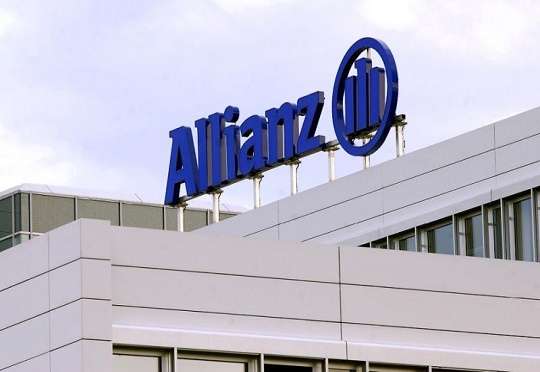According to Allianz recently released Safety and Shipping 2023 report, the shipping and maritime sector has seen ship losses at sea climb down over the past 12 months, but added that despite this, the sector faces new safety challenges posed by jump in fires, shadow tanker fleet and economic uncertainty.
According to the highlights of the report, in 2022, only 38 large ships were lost worldwide, a number that was down by a third and the lowest total since the report began. Of these losses, it noted that the South China Sea region accounted for most total losses while the British Isles recorded the most shipping incidents.
The report also shows fire to be the second top cause of loss in the last 12 months with eight vessels lost and more than 200 incidents reported – the highest in a decade.
According to the report, the transport of electric vehicles and battery-powered goods bring new fire risks, noting that larger vessels and mis-declaration of cargo amplify consequences. It reported that sanctions that are based on oil, results in growth of the shadow tanker fleet, which now pose safety and environmental concerns.
The report noted that globally, maritime piracy is at its lowest level for almost three decades. The overall reduction in activity in the Gulf of Guinea – down from 35 incidents in 2021 to 19 in 2022, is a significant contributor.
Allianz Group sees premium, commission income push revenues 5.7% to €148 billion. Also, it found that more expensive claims due to inflation; cost pressures could impact the shipping sector’s decarbonization and safety initiatives.
“Shipping transports around 90% of world trade onboard different vessels so maritime safety is critical. Improvements have been significant over the past decade, culminating in the sector reporting a record low number of large ships lost over the past year.
“However, a combination of factors impacting fire risk, ongoing and new threats posed by the ripple effects of the Ukraine conflict, decarbonization challenges, economic uncertainty, as well as the rising cost of marine claims, means the sector still has plenty of obstacles to navigate over the next 12 months and beyond.”
Allianz Global
Shipping Losses Sunk to the Lowest Number seen in the 12-year History
Rahul Khanna, global head of marine risk consulting at Allianz Global Corporate & Specialty SE’s (AGCS) noted that shipping losses have sunk to the lowest number seen in the 12-year history of the annual study reflecting the positive impact safety programmes, training, changes in ship design and regulation have had over time.
“While these results are gratifying, several clouds appear on the horizon. More than a year after Russia’s invasion of Ukraine, the growth of the shadow oil tanker fleet is the latest consequence to challenge ship-owners, their crew and insurers. Fire safety and the problem of mis-declaration of hazardous cargo must be fixed if the industry is to benefit from the efficiency of ever- larger vessels. Inflation is pushing up the cost of hull, machinery and cargo claims.
“Meanwhile, although the industry’s decarbonization efforts are progressing, this remains by far the sector’s biggest challenge. Economic pressures could put vital investments in companies’ strategies, as well as in other safety initiatives, in jeopardy.”
Rahul Khanna
The report analysed that shipping losses and casualties (incidents) involving ships over 100 gross tonnes, every year. While in 2022, 38 total losses of vessels were reported globally, it was 59 a year earlier. This represents a 65 percent decline in annual losses over 10 years (109 in 2013). Thirty years ago, the global fleet was losing 200+ vessels a year, said Allianz.
The report informed that there have been more than 800 total losses over the past decade (807), noting that South China, Indochina, Indonesia, and the Philippines maritime region is the global loss hotspot, both over the past year and decade (204 total losses).
It accounted for one-in-five losses in 2022 (10) driven by factors including high levels of trade, congested ports, older fleets and extreme weather. The Arabian Gulf, British Isles and West Mediterranean waters were the second top loss locations (3), the report noted, adding that around a quarter of vessels lost in 2022 were cargo (10).
It found the main cause of loss across all vessel types to be foundered (sunk/submerged) was the main cause of total loss across all vessel types (20), accounting for over 50%. Fire/explosion ranked as the second top cause of loss (8). Vessel collision third (4).
While total losses declined over the past year, the number of shipping casualties or incidents reported remained consistent (3,032 in 2022 compared to 3,000 in 2021). The British Isles saw the highest number (679). Machinery damage or failure accounted for close to half of all incidents globally (1,478). There were over 200 fires reported during 2022 (209) – the highest number for a decade, making this the third top cause of incidents globally, up 17% year-on-year.
Hull and cargo fire risks continue to concern
Several factors are increasing the risk of fires at sea and on land. Decarbonization is leading to new types of cargo being transported on vessels, such as electric vehicles (EVs) and battery-powered goods. Potentially highly flammable lithium-ion (Li-ion) batteries pose a growing risk for container shipping and car carriers. This battery market is expected to grow by over 30% annually over the next decade.
One of the main hazards of Li-ion batteries is ‘thermal runaway’, a rapid self-heating fire that can cause an explosion.
The main causes of Li-ion fires are substandard manufacturing or damaged battery cells or devices, over-charging and short-circuiting. Fires in EVs with Li-ion batteries are difficult to extinguish and capable of spontaneously reigniting. “Most ships lack the suitable protection, detection and firefighting capabilities to tackle such fires at sea,” says Khanna.
“Attention must focus both on pre-emptive measures and emergency plans to help mitigate this peril such as adequate crew training and access to appropriate firefighting equipment or improving early detection systems. Purpose-built vessels for transporting EVs would be advantageous.”
Khanna
At the same time, hazardous cargoes are increasingly transported by increasingly larger vessels. Container carrying capacity has doubled in the last 20 years. The 10 largest container operators have more than 400 new vessels on order and the majority will be larger than the ships they replace.
Consequently, the impact of fires is amplified, potentially resulting in more severe losses. Fire is already one of the most frequent causes of total losses across all vessel types with 64 ships lost in the past five years alone. Meanwhile, AGCS analysis of close to 250,000 marine insurance industry claims shows that fire was also the most expensive cause of loss, accounting for 18% of the value of all claims analysed.
READ ALSO: Afrocet Montgomery Organizes First International Exhibition For Manufacturing Industries in Ghana























